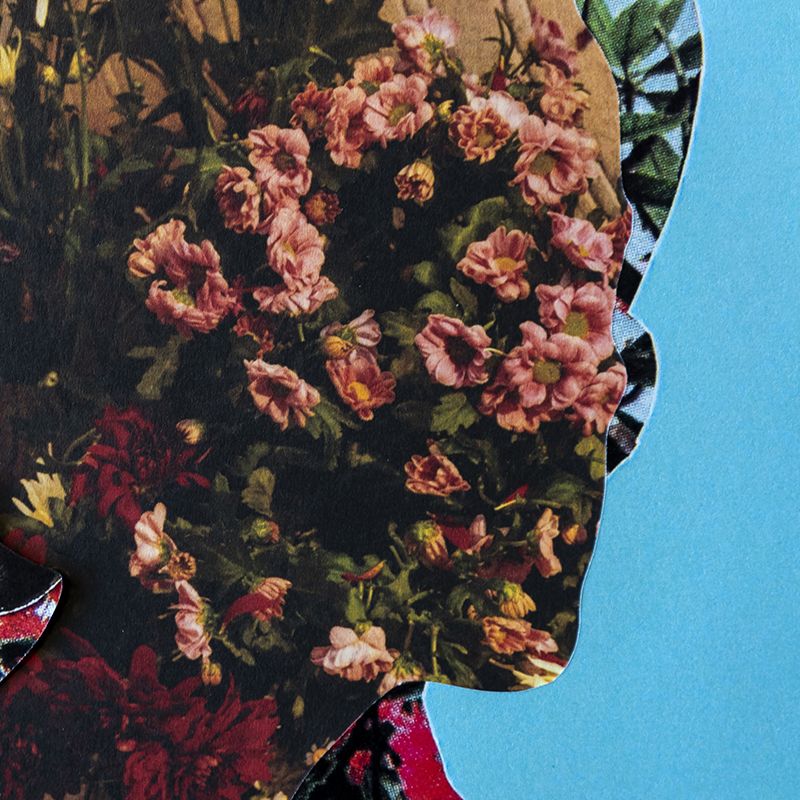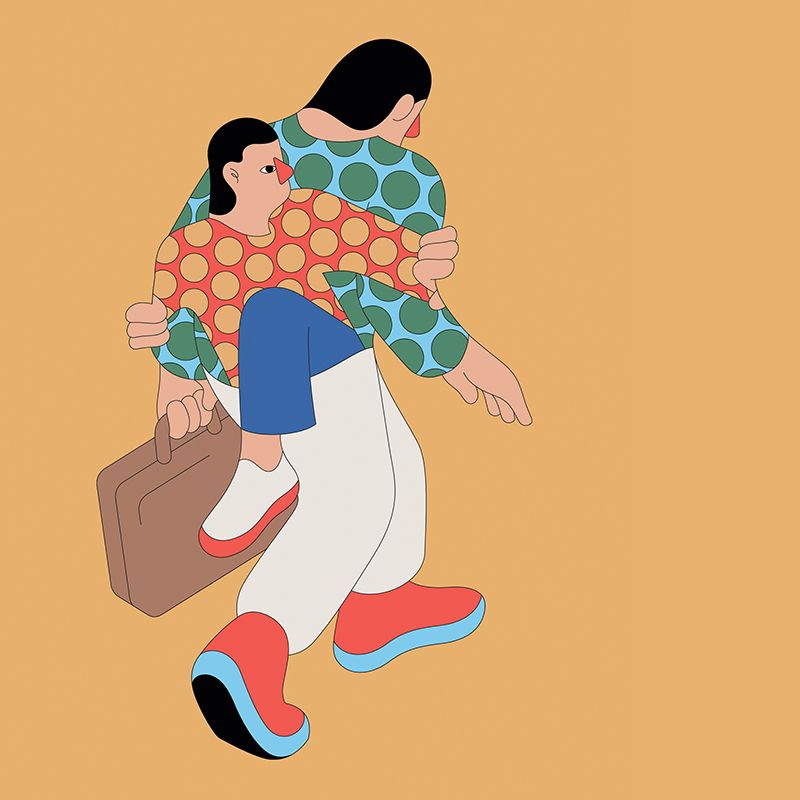Unlikely Hikers members Amanda Gilliam and Drew Hulsey have both found solace in sharing their love of nature with people who look like them. Gilliam lives in New Jersey and is an avid hiker; Hulsey, who lives in Tennessee, watched a rock-climbing documentary and became interested in the sport but found that there was little representation of bigger bodies in that space. Both are committed to showing that the outdoors really are for everybody.
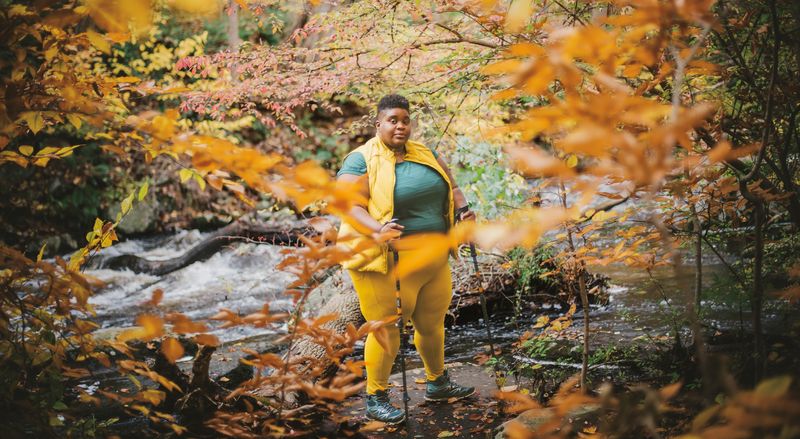
Reclaiming the Outdoors
The “Unlikely Hikers” community wants to show that nature is for every body
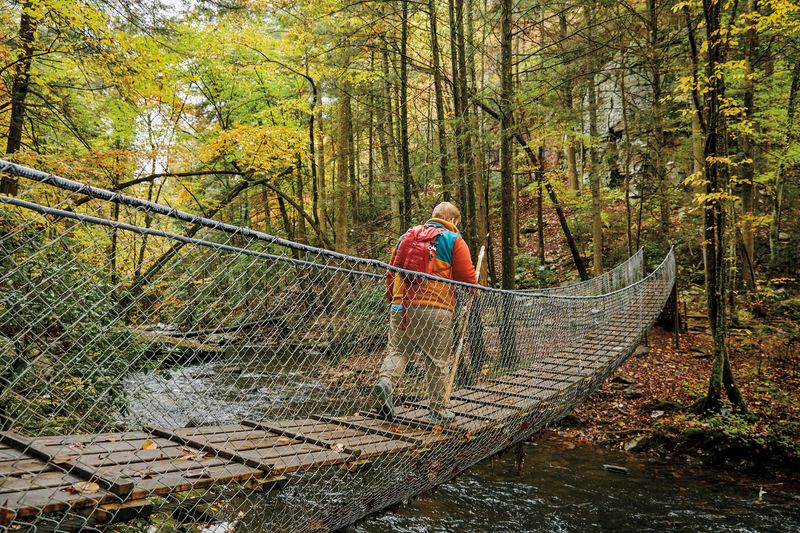
Drew Hulsey
Nashville, Tennessee
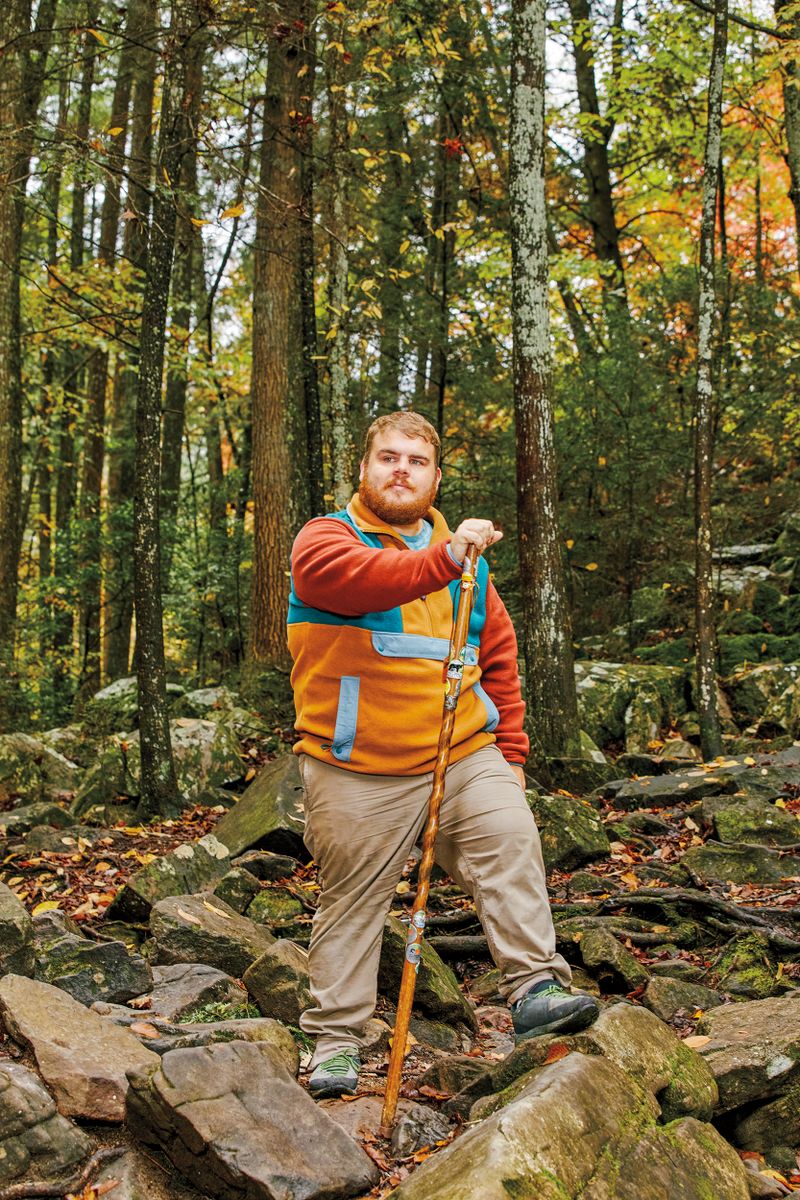
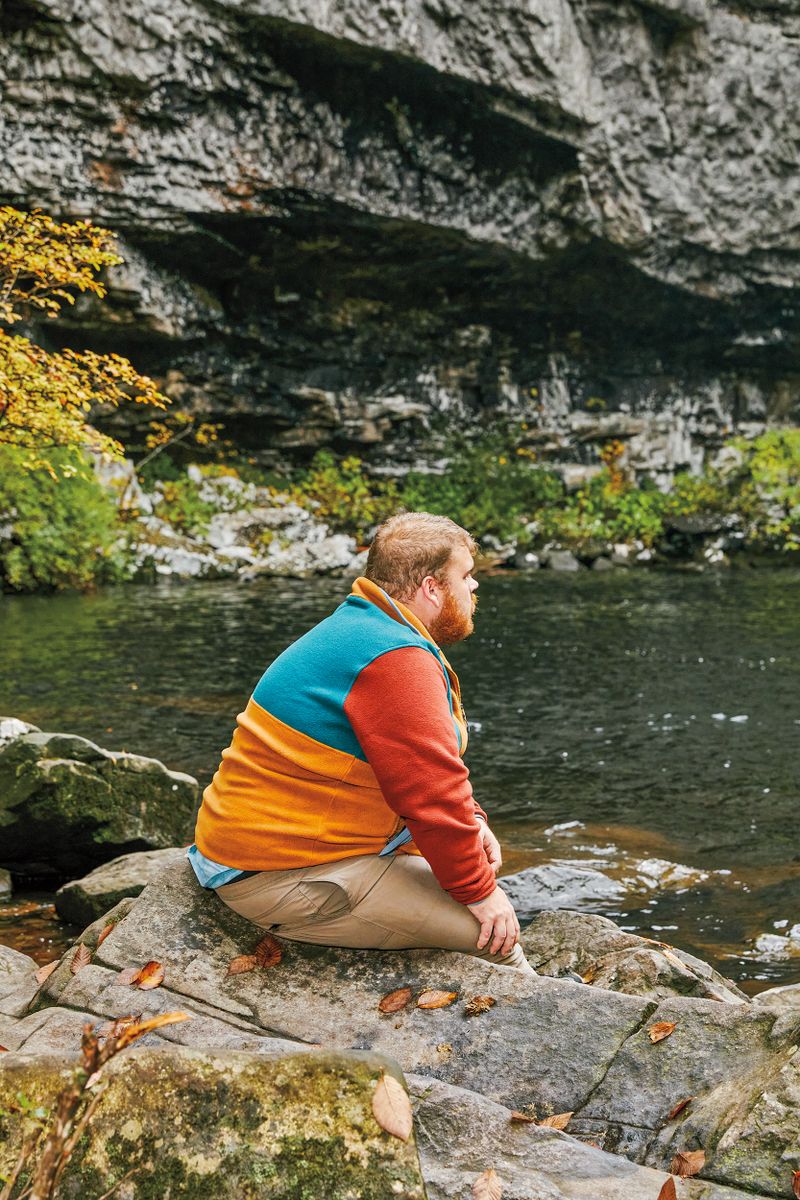
Amanda: I’m coming to outdoor activities from a position that I don’t regularly see represented in mainstream outdoors material. I don’t see a lot of fat people. I don’t see a lot of Black people. Don’t see a lot of queer folks. I think it’s important to think about, “Who is it unlikely for?” When you think about the history of Blackness in the United States, it’s inseparable from the land and the outdoors. It’s really about reclaiming our space and our experiences in the outdoors.
Drew: You see another person that looks like you, and then you realize that you’re part of that group, because you realize, “Oh, you’re a bigger person. You’re also doing this. This is amazing.” Media has shown that we’re not in these spaces, but we really are. If I see a bigger person at the gym, I’m like, “Heck yeah, this is awesome.”
On how the outdoors healed them during the pandemic:Amanda: My experience with the outdoors in the pandemic can’t be separated from racism. I was suffocated by the pandemic in my house, but I also felt like I was suffocated by racism and just needed to get out somewhere, to just be out and about and free. It has been really freeing from social claustrophobia as much as physical claustrophobia.
“Media has shown that we’re not in these spaces, but we really are. If I see a bigger person at the gym, I’m like, ‘Heck yeah, this is awesome.’”
Drew: My wife and I bought a 1993 van and gutted it and put a bed in it and everything. That’s kind of our adventure vehicle now. Once October hit, which is fall climbing season, I was meeting up with strangers I talked to on the internet. We finally got to meet each other safely, not in a big group, and a lot of the relationships I formed online, I met for the first time last year. And this year, I got to meet up with those same people in the same spaces.
Worldwide, search for outdoor activities near me hit an all-time high in 2021, while interest in body positivity reached its highest level ever in the U.S.
Amanda: There’s ways in which the outdoors are still really inaccessible to lots of folks, especially if they’re disabled. There are ways that we talk about trails and definitions that we have that I don’t think are anything approaching universal: we have easy, moderate, and hard, but those things don’t mean what they mean for other people. So there’s a certain language that may be created from a dominant perspective and is not keeping in mind the wide range of experiences.
Drew: I’ve been having to wear the same climbing harness because it’s the only one that really fits me. There are gear companies hopping on board with inclusive sizing, slowly. I really push for this inclusivity within the outdoor world, because people wanna try this thing, and they’re being excluded because either bigger bodies aren’t being advertised or they’re not being shown doing the sport even though they’re out there.
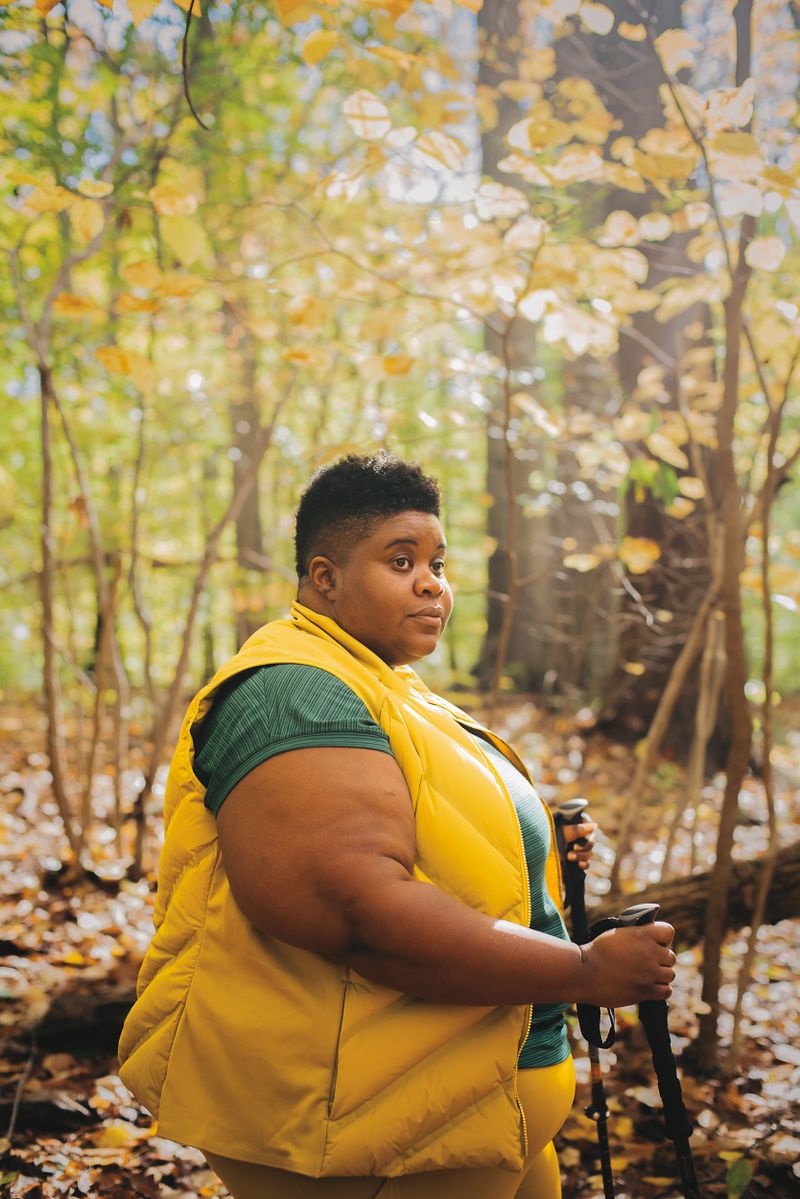
Amanda Gilliam
Somerset, New Jersey
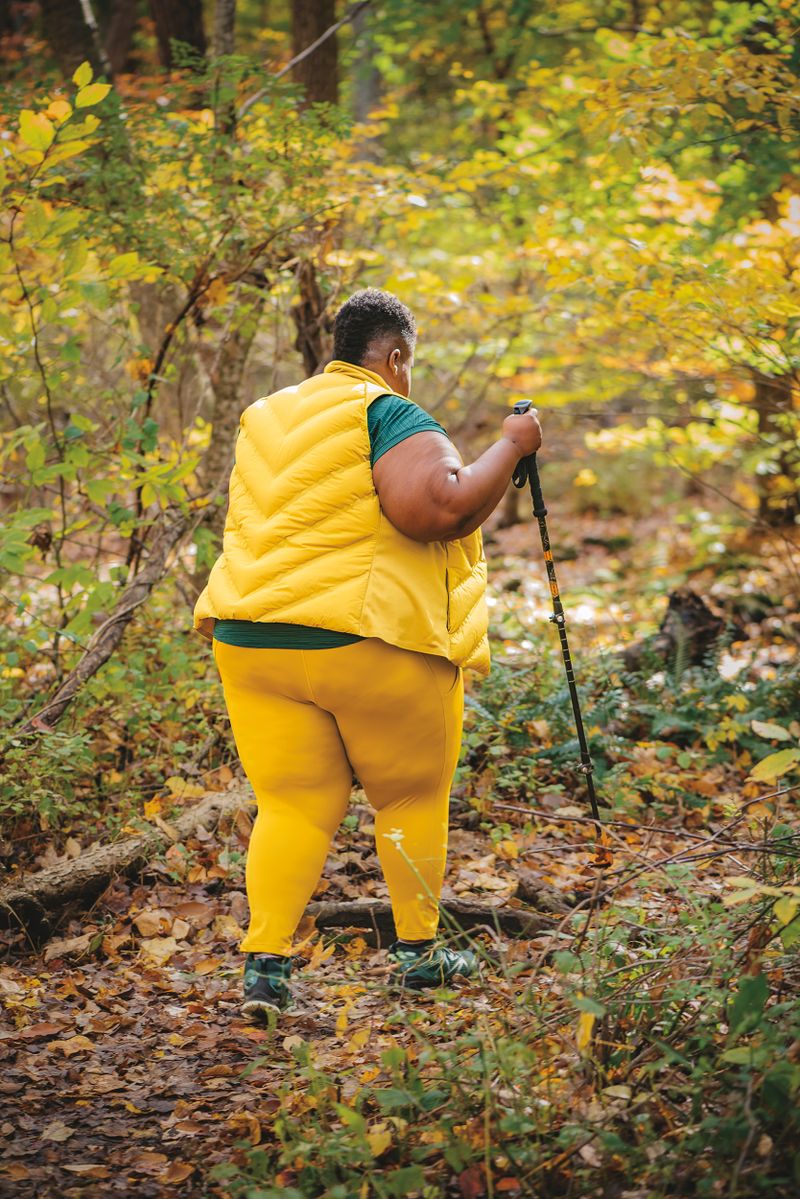

Amanda: I think the fear and the hesitation and the caution can be really productive. Sometimes we want to pretend like those feelings aren’t there, or they’re not as bad as you think they are. But I think leaning into those things helps us get prepared and inspires us to seek out people who have had those experiences. In Unlikely Hikers and groups like it, the community aspect of it has been so, so powerful. It allows me to know that I can do the things that I want to do. And it’s also possible to stand there and say, “I’m scared. I don’t know if I can do this. I don’t know if my body is ready for this.” We should honor that vulnerability and the way that we feel, because by naming how we feel, we can also name the systems that are supporting and upholding these ways that we feel.
Drew: I personally have started showing up in these spaces so that I can show others that they can do it, too. If you’re scared or intimidated, just realize that you know you have a wonderful body. You can do whatever you want with it. You can climb easy stuff; you can climb hard stuff; you can hike hard trails or easy trails. As long as you’re getting out and showing up in these spaces, that’s important.
